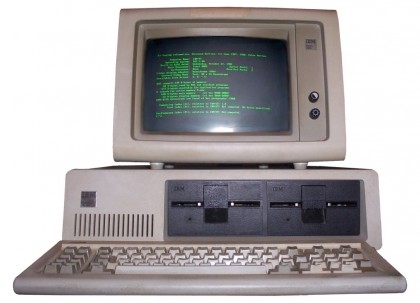Intel's first blockbuster chip was the 8088 – and it changed everything 45 years ago
This chip that powered one of the most iconic computers in the world – the IBM PC

Intel is a name that's almost synonymous with the CPUs that power some of the best PCs and best laptops around today. Alongside AMD, Intel dominates a market that many argue it first cornered 45 years ago with the launch of its 8088 Micro-processor.
Released in 1979, this was the first major CPU that Intel produced that propelled the x86 architecture to the fore – and was ironically a successor to the first x86 CPU, called the 8086 Micro-processor, that had been made some years before.
Although only a minor improvement on the 8086, the 8088 Micro-processor has gone down in history – and is arguably what fuelled Intel's rise to dominate a market for so many decades, according to IEEE Spectrum.
An iconic processor for an iconic PC
The Intel 8088 Micro-processor ran at 5MHz, representing a 50-times speed boost against the 4004 chip eight years before, and it included 29,000 transistors – which was more than 12 times the number in the former chip.
Nowadays, of course, the transistor count in chips – including the best graphics cards – is much, much higher. Nvidida's H200 GPU, for example, which is used to train AI models, has 80 billion transistors. Elsewhere, the key innovation in the 8088 versus the 8086 was the use of a full 16-bit internal architecture but mated with an 8-bit data bus.
Without the 8088 we wouldn't have the likes of the IBM Model 5150 – commonly known as the IBM Personal Computer (IBM PC) – which was one of the first machines to use it when it launched in 1981. The iconic IBM PC attributed its prominence to the power afforded by Intel's then-powerful CPU, and paired it with 16KB or 64KB RAM, which was expandable to 640KB. IBM selected the Intel 8088 because Intel offered a much better price and could offer many more units, according to InfoWorld (1982).
The first microcomputer in the world – the Q1 – which is widely considered to have inspired modern PCs – also used the Intel 8088 Micro-processor. This machine had 16KB of memory and ran at 800kHz, and boasted a zany built-in orange flat-panel plasma display.
Sign up to the TechRadar Pro newsletter to get all the top news, opinion, features and guidance your business needs to succeed!
More from TechRadar Pro
- These are the best CPUs out there today
- We've rounded up the fastest processors around right now
- Check out our list of the best AMD CPUs

Keumars Afifi-Sabet is the Technology Editor for Live Science. He has written for a variety of publications including ITPro, The Week Digital and ComputerActive. He has worked as a technology journalist for more than five years, having previously held the role of features editor with ITPro. In his previous role, he oversaw the commissioning and publishing of long form in areas including AI, cyber security, cloud computing and digital transformation.